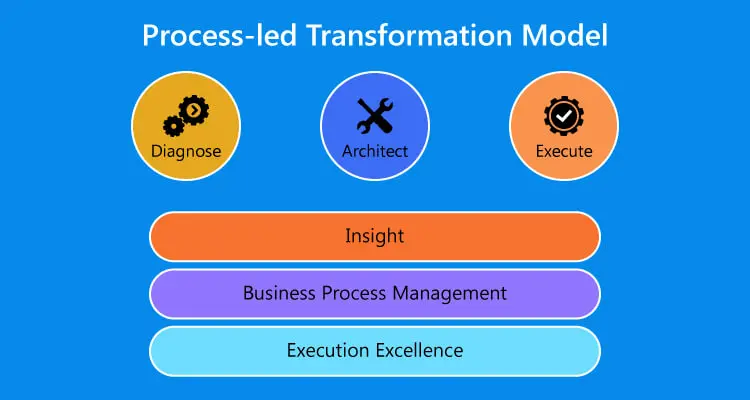
Overview of the Managed Services Market
Infrastructure is increasing in complexity with the proliferation of software features. As businesses grow and expand the demand from existing software capabilities is catapulting leading to complex network integrations. However, IT resources and budget remain limited presenting significant challenges to CIOs to manage the technology environments of their organizations. They are under constant pressure to manage new release schedules, monitor performance and ensure security and availability of their networks, aimed to meet the growing business demands.
Why companies opt for Managed Services
To reduce the total cost of ownership (TCO) of technology, managed services has become the trusted option for enterprises worldwide. Today this is a USD 180.5 billion business expected to grow to USD 282.0 billion by 2023, at a CAGR of 9.3%. North America is estimated to account for the largest share of the market in 2018, as reported by MarketsandMarkets Research. Other reasons why CIOs prefer the managed services model is to ensure accelerated return on investment in new technologies despite lack of in-house next-generation technology expertise. Those CIOs who opted for managed services found that they were able to build more predictability into network performance, risk and budget and were able to focus on innovating their IT setup to meet business needs in the present and for the future.
Explaining Process-led Transformation (PLT) in the context of Managed Services
If these reasons remain true in the future as they have in the past, there will be several even more compelling reasons to turn to managed services such as a rise in complexity of business-driven technology solutions, increasing dependency on applications and infrastructure and a mobile workforce. CIOs also are not seeing a proportionate surge in IT budgets for training resources and managing infrastructure. The converse is more the case with slashed budgets and limited resources.
Will the option of merely handing over the infrastructure management to a managed services provider suffice, keeping in mind the growing and rapidly transforming business and technology landscapes? One option for managed services to be of meaningful use is for providers to follow a process driven approach and methodology. One such method is Process Led Transformation (PLT), an objective approach to ensure competitive advantage through proactive process management.
How does Process-led Transformation work?
PLT starts at the heart of a business and processes emerge from the core to embrace the entire organization. It requires the integration of a breadth of approaches, capabilities and assets applicable to the industry, and the organization.
- Managed services for Process-led Transformation will provide CIOs dynamic, end-to-end visibility into operations helping them to identify issues that affect the business.
- It will establish a discipline that becomes the bedrock for future transformation through strategy, segmentation, and governance. From there on, it helps with continuous execution excellence and enduring performance levels.
- PLT will eventually lead to operational transformation, where current and future IT capabilities are aligned to the business.
- It offers transparency into existing operations and provides the analytics required for CIOs to plan future operational requirements.
- It is linked to continuous improvement for value realization and therefore remains flexible to meet future demands.

To explain with the help of a case study, one of our client, the fourth largest market research firm with more than 12,000 experts in 100+ countries around the world wanted to develop a center of excellence as a centralized solution for Application Maintenance and Support to improve processes, drive operational excellence and efficiency. The client had multiple applications and databases that required management and maintenance. However, with the lack of documents, business processes were not captured nor were they put through a quality process. As a result, there was a high degree of complexity, escalating maintenance costs and issues with resource management.
Instead of merely looking at the applications as requiring optimization, WinWire, through a process led transformation helped the client to optimize its IT to achieve long-term business and operational value. The consulting team began the transformation process by asking the following questions:
- What are the impediments to performance?
- How can customer experience be improved?
- How to identify those activities that are not adding any value to the business or customers?
- How to increase speed and operational efficiency?
- How to make the answers apply to the long term?
These questions helped the team and the client to
- Achieve process transparency to see what is working and what is not to focus on improvements.
- To understand how to optimize performance with precision.
- To identify opportunities to improve speed, cost, and quality for long term competitive advantage and enduring customer value.
Using the PLT methodology, WinWire performed a detailed assessment to establish a baseline of the current quality of support services, the root causes, as well as the impact on the organization and the end users. Starting at the core, it set up an efficient Managed Services center of excellence. It reduced the number of tickets (defects) in the applications by continuously performing root-cause-analysis.
Key benefits of Managed Services for Process-led Transformation
- Improved operational and organizational performance because of process transparency. Viewing end-to-end processes gives a bird’s eye view of what is working and what is not and how to optimize performance with precisions and so forth.
- The pace to move from strategy to execution with certainty is a crucial benefit of PLT
- PLT ensures competitive advantage through intervention and proactive process management. It simplifies diagnosing, for transformation and insight.
- PLT offers a pragmatic approach to diagnose issues
- It provides a dynamic view of the overall functioning of the enterprise and provides clarity and insight.
Augment your operational efficiency with WinWire
WinWire Technologies, a global IT solutions company, helps to drive exponential growth and competitive edge to customers by aligning business value with digital transformation.WinWire’s Managed Servicesfor PLT allows CIOs to focus on their strategic goals while WinWire ensures operational efficiency. We are proud to announce that we have recently received the CompTIA Managed Services Trustmark. Earning this credential identifies WinWireas a business that meets or exceeds the best business practices the IT industry has to offer.





